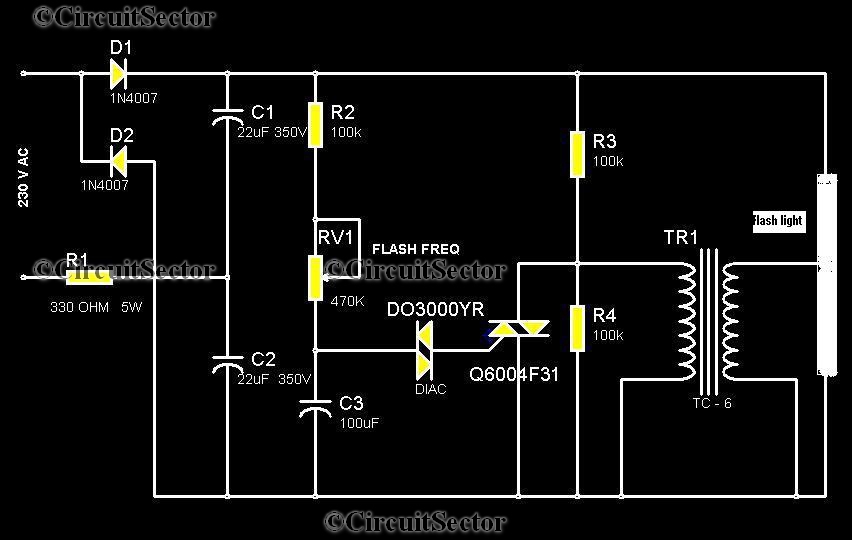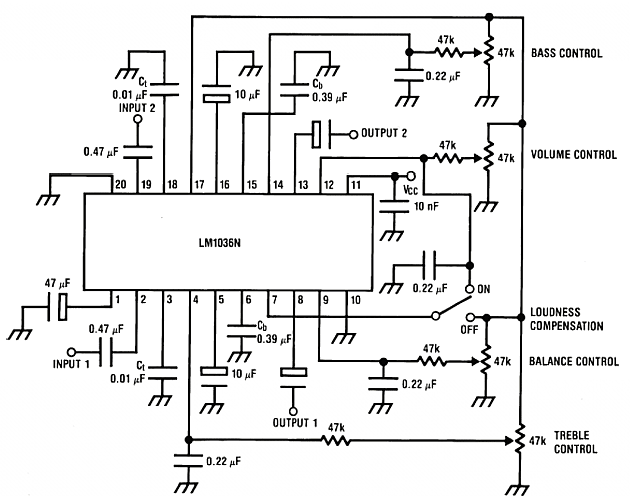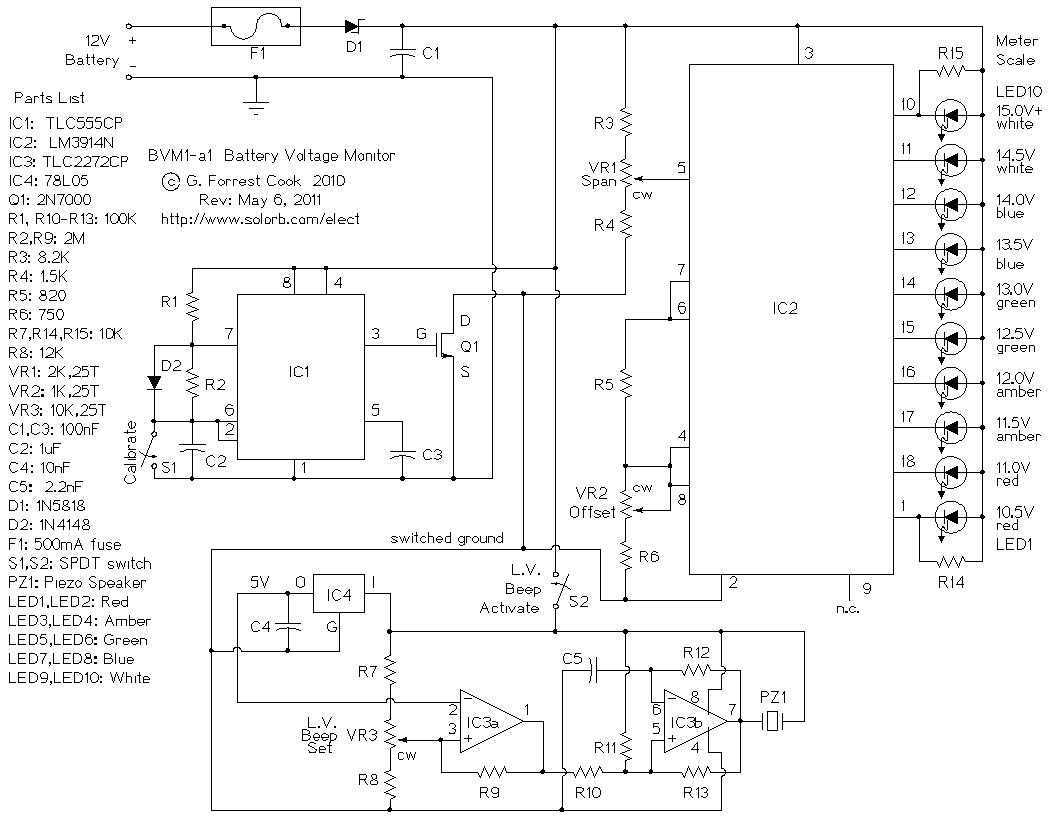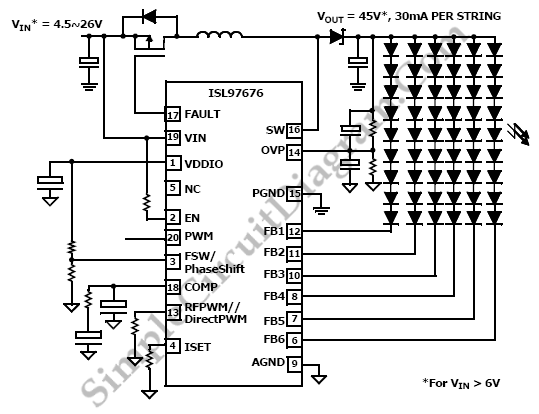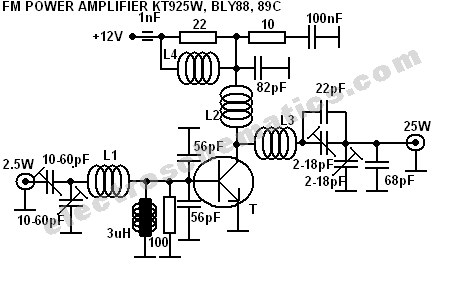
Tip a battery discharge control circuit
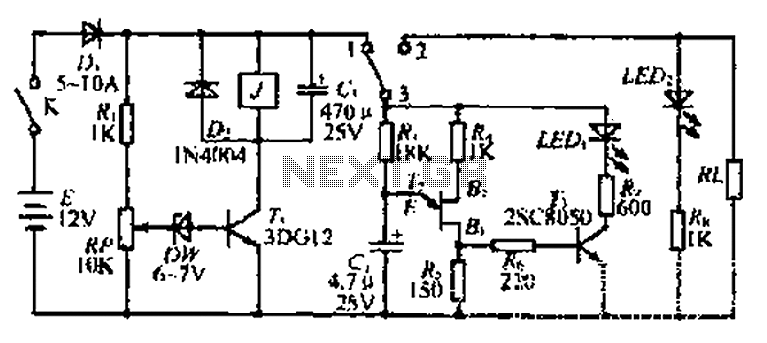
The discharge control circuit consists of a battery management system designed to prevent over-discharge of a battery. It features a relay control mechanism that activates when the battery voltage drops below a specified threshold of approximately 10.5V. The circuit includes a normally open contact connected to a green LED indicator, which illuminates when the load is operational. If the battery voltage falls too low, the circuit will disengage the load via a normally closed contact, indicated by a red LED that flashes to signal the need for battery charging. The charging time is determined by the specific charge characteristics of the battery, and precautions are taken to prevent damage due to over-discharge.
The circuit operates by monitoring the battery voltage continuously. When the voltage reaches a critical level, the relay, controlled by resistors that set the voltage thresholds, will activate. The normally open contact closes, allowing current to flow to the load, while simultaneously illuminating the green LED to indicate that the system is operational.
As the battery discharges and the voltage drops to around 10.5V, the control circuit will trigger the normally closed contact to open, cutting off power to the load. This action is crucial to prevent the battery from entering a deep discharge state, which can lead to irreversible damage. The flashing red LED serves as a visual cue to the user that the battery requires charging.
The time required for recharging the battery is influenced by the charge characteristics of the specific battery used in the circuit. A capacitor may be included to smooth out voltage fluctuations during the charging process, ensuring stable operation. The design of the circuit takes into account various parameters such as the charge time, the discharge rate, and the load requirements to optimize the performance and longevity of the battery.
In summary, this discharge control circuit is vital for maintaining battery health by preventing over-discharge, providing visual indicators for operational status, and ensuring safe charging practices. By R. RP, DW, f TV over the composition of the discharge control circuit: B, consisting of n Island and over-discharge circuit prompted the stage Ji pod K. Gracilaria battery v oltage by R., RP partial pressure breakdown DW flE f saturated conduction, following electrical JI. For. J. 3 normally open contact connected, the green LED light. Load electrical work. When the battery voltage drop Artemisia born when the original is not given JO ~ 10.5V, R. Levant P partial pressure of not breakdown DW. R can not make saturation of Sociology pass, stop relay J T ashamed I. 2 NC contact connected, green L drama) i,; V, fried stop IE work load, Qiang battery voltage through Ci Yan of charge (Q charge time is determined by x date .G). So Ti, t Bu discontinuous conduction. Red color I, FD twinkling prompt sheet] households, this time by L battery voltage, battery charging Ding Pei should avoid Qiang battery damage due to address discharge.
The circuit operates by monitoring the battery voltage continuously. When the voltage reaches a critical level, the relay, controlled by resistors that set the voltage thresholds, will activate. The normally open contact closes, allowing current to flow to the load, while simultaneously illuminating the green LED to indicate that the system is operational.
As the battery discharges and the voltage drops to around 10.5V, the control circuit will trigger the normally closed contact to open, cutting off power to the load. This action is crucial to prevent the battery from entering a deep discharge state, which can lead to irreversible damage. The flashing red LED serves as a visual cue to the user that the battery requires charging.
The time required for recharging the battery is influenced by the charge characteristics of the specific battery used in the circuit. A capacitor may be included to smooth out voltage fluctuations during the charging process, ensuring stable operation. The design of the circuit takes into account various parameters such as the charge time, the discharge rate, and the load requirements to optimize the performance and longevity of the battery.
In summary, this discharge control circuit is vital for maintaining battery health by preventing over-discharge, providing visual indicators for operational status, and ensuring safe charging practices. By R. RP, DW, f TV over the composition of the discharge control circuit: B, consisting of n Island and over-discharge circuit prompted the stage Ji pod K. Gracilaria battery v oltage by R., RP partial pressure breakdown DW flE f saturated conduction, following electrical JI. For. J. 3 normally open contact connected, the green LED light. Load electrical work. When the battery voltage drop Artemisia born when the original is not given JO ~ 10.5V, R. Levant P partial pressure of not breakdown DW. R can not make saturation of Sociology pass, stop relay J T ashamed I. 2 NC contact connected, green L drama) i,; V, fried stop IE work load, Qiang battery voltage through Ci Yan of charge (Q charge time is determined by x date .G). So Ti, t Bu discontinuous conduction. Red color I, FD twinkling prompt sheet] households, this time by L battery voltage, battery charging Ding Pei should avoid Qiang battery damage due to address discharge.
Warning: include(partials/cookie-banner.php): Failed to open stream: Permission denied in /var/www/html/nextgr/view-circuit.php on line 713
Warning: include(): Failed opening 'partials/cookie-banner.php' for inclusion (include_path='.:/usr/share/php') in /var/www/html/nextgr/view-circuit.php on line 713
